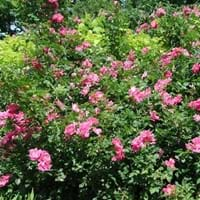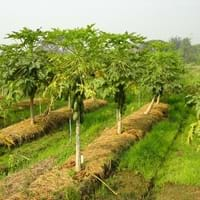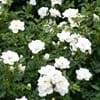Life Span
Perennial
Annual and Perennial
Origin
Europe, Northern America, Northern Europe
Mexico, Central America
Types
Not Available
Male Papaya Tree, Female Papaya Tree, hermaphrodite Tree
Habitat
shores, Shores of rivers or lakes
tropical environments, Tropical regions
USDA Hardiness Zone
9-10
10-15
AHS Heat Zone
-9999
12-10
Sunset Zone
7, 8, 9, 12, 13, 14, 15, 16, 17, 18, 19, 20, 21, 22, 23, 24
H1, H2, 21, 23, 24
Habit
Spreading
Upright/Erect
Flower Color
Baby Pink, Not Available, Pink, Red
Ivory
Flower Color Modifier
Not Available
Bicolor
Fruit Color
Not Available
Green, Orange, Light Yellow
Leaf Color in Spring
Green
Dark Green
Leaf Color in Summer
Green
Dark Green
Leaf Color in Fall
Green
Dark Green
Leaf Color in Winter
Green
Light Green
Leaf Shape
Elliptic
Irregular
Plant Season
Spring, Summer
Spring, Summer, Fall, Winter
Sunlight
Full Sun, Partial Sun
Full Sun, Partial Sun, Partial shade
Growth Rate
Medium
Very Fast
Type of Soil
Clay, Loam, Sand
Loam, Sand, Well drained
The pH of Soil
Acidic, Neutral
Acidic, Neutral
Soil Drainage
Well drained
Well drained
Bloom Time
Early Spring, Spring, Late Spring
Indeterminate
Tolerances
Drought
Drought
Where to Plant?
Container, Ground, Pot
Ground
How to Plant?
Seedlings
Seedlings
Plant Maintenance
Medium
Medium
Watering Requirements
occasional watering once established
Average Water Needs, Do Not over Water, Do not water frequently, Requires watering in the growing season
In Summer
Lots of watering
Lots of watering
In Spring
Moderate
Moderate
In Winter
Average Water
Average Water
Soil pH
Acidic, Neutral
Acidic, Neutral
Soil Type
Clay, Loam, Sand
Loam, Sand
Soil Drainage Capacity
Well drained
Well drained
Sun Exposure
Full Sun, Partial Sun
Full Sun, Partial Sun, Partial shade
Pruning
Remove damaged leaves, Remove dead branches, Remove dead leaves
Remove damaged leaves, Remove dead branches, Remove dead leaves, Remove shoots, Remove short branches, Remove short twigs, Requires little pruning
Fertilizers
Doesn't require fertilization when grown in rich soil
14-14-14 Fertilizer
Pests and Diseases
Botrytis Blight, Powdery mildew, Sooty Mold, Verticillium Wilt
Red blotch
Plant Tolerance
Drought
Drought
Flower Petal Number
Single
Single
Fragrant Bark/Stem
Yes
No
Foliage Texture
Medium
Bold
Foliage Sheen
Matte
Glossy
Attracts
Hummingbirds, Butterflies
Ants, Bees, Hummingbirds
Allergy
no allergic reactions
Asthma, breathing problems, Itchiness, Itchy eyes, Red eyes, Runny nose, sneezing, Sore eyes, Swelling, Watery eyes, wheezing
Aesthetic Uses
Showy Purposes
Not Used For Aesthetic Purpose
Beauty Benefits
Perfumes
Good for skin, Good for skin and hair, Improve hair condition, Making cosmetics, Not Available
Environmental Uses
Air purification
Air purification
Medicinal Uses
No Medicinal Use
Asthma, Bone strength, Cancer, Diabetes, Digestion problems, Heart problems, Inflammation, Skin Disorders
Part of Plant Used
Whole plant
Fruits, Seeds
Other Uses
Oil is used for aromatherapy, Used as Ornamental plant
Cosmetics, Making Shampoo, Used As Food, Used for its medicinal properties
Used As Indoor Plant
No
No
Used As Outdoor Plant
Yes
Yes
Garden Design
Foundation, Mixed Border
Container, Edible, Feature Plant, Fruit / Fruit Tree, Tropical
Botanical Name
Rosa rugosa
CARICA papaya
Common Name
Ramanas Rose, Japanese Rose, Rugosa Rose
Papaya
In Hindi
Japanese Rose
पपीता
In German
Japanese Rose
Papaya
In French
Japanese Rose
Papaye
In Spanish
Japanese Rose
Papaya
In Greek
Γιαπωνέζικο Τριαντάφυλλο
Παπάγια
In Portuguese
Japanese Rose
Mamão
In Polish
Japanese Rose
Papaja
In Latin
Japanese Rose
Papaya
Phylum
Not Available
Magnoliophyta
Class
Not Available
Magnoliopsida
Order
Malvales
Brassicales
Family
Cistaceae
Caricaceae
Clade
Angiosperms, Eudicots, Rosids
Angiosperms, Eudicots, Rosids
Tribe
Not Available
Not Available
Subfamily
Not Available
Not Available
Number of Species
Not Available
Season and Care of Japanese Rose and Papaya
Season and care of Japanese Rose and Papaya is important to know. While considering everything about Japanese Rose and Papaya Care, growing season is an essential factor. Japanese Rose season is Spring and Summer and Papaya season is Spring and Summer. The type of soil for Japanese Rose is Clay, Loam, Sand and for Papaya is Loam, Sand, Well drained while the PH of soil for Japanese Rose is Acidic, Neutral and for Papaya is Acidic, Neutral.
Japanese Rose and Papaya Physical Information
Japanese Rose and Papaya physical information is very important for comparison. Japanese Rose height is 50.80 cm and width 90.00 cm whereas Papaya height is 457.20 cm and width 7.62 cm. The color specification of Japanese Rose and Papaya are as follows:
Japanese Rose flower color: Baby Pink, Not Available, Pink and Red
Japanese Rose leaf color: Green
Papaya flower color: Ivory
- Papaya leaf color: Dark Green
Care of Japanese Rose and Papaya
Care of Japanese Rose and Papaya include pruning, fertilizers, watering etc. Japanese Rose pruning is done Remove damaged leaves, Remove dead branches and Remove dead leaves and Papaya pruning is done Remove damaged leaves, Remove dead branches, Remove dead leaves, Remove shoots, Remove short branches, Remove short twigs and Requires little pruning. In summer Japanese Rose needs Lots of watering and in winter, it needs Average Water. Whereas, in summer Papaya needs Lots of watering and in winter, it needs Average Water.





